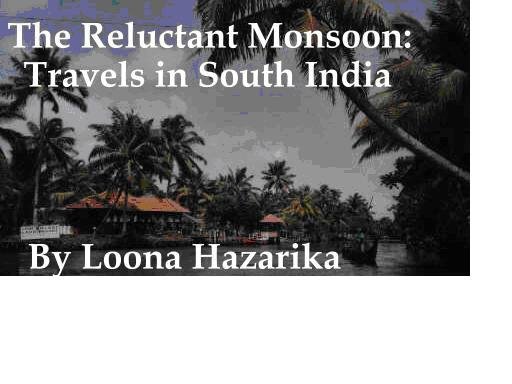Trichur to Fort Cochin: 11th May
God bless the sellers on trains. Carriers and purveyors of roasted peanuts, crunchy honeyed nut bars and steaming coffees in flimsy plastic cups. With a deftness and grace tantamount to a performing art, they weave their way through squashes of passengers, carrying their wares; pouring tea from a hot-to-touch metal urn, without spilling a drop in the regular shake of the carriage; they make small newspaper-cones and fill them with chickpeas and lentils and squeeze lime juice on it with just one hand. With the nimbleness of foot of a ballerina and the dexterous fingers of an origami expert, one of them brought me my breakfast – a paper bag full of steaming and gently spiced rice.
The overnight train that pulled in to Trichur station was full of bleary-eyed Bombayites; two lads sat chatting nonchalantly with their legs dangling off the carriage. I got off at Ernakulum Town station and took a bus through Cochin, a group of islands and peninsulas tied together by bridges and ferries, one of India’s largest ports and a major naval base.
I am staying at the Delight Hotel an elegant hotel-home with high ceilings held up with old Burma teak beams, built by Europeans, lived in by Flowery and David the Indian Landlords . The roof terrace overlooks the Parade Ground and the St Fancis Church, the oldest church in India and first resting place of Vasco Da Gama’s body. It was built in 1503 by the Portuguese and depending on who was in charge at the time was Catholic, Dutch Protestant, Anglican and is currently being used by the Church of South India. Fort Cochin’s distinctly foreign ambience has rubbed off from traders who came here for centuries to take spices, ivory and peacocks back to Europe, China and Africa. In places it is like an English seaside town in the sub-tropics, Eastbourne with coconut trees.
Fort Cochin has narrow streets straddled with quaint houses shoulder-barging for space. The thoroughfares have names like Lilly Street and Princess Street and a crossroads called Loafer’s Corner, haunt of the hawkers. One of the hawkers has a masterful technique to get tourists in to his office – he asks people which country they are from. Then he mentions a football team from that country and lists players and matches with a level of details a TV pundit would be proud of. The rapport started, he would lure them in to his office and sell them tickets for a backwater cruise, still mentioning David Beckham and Zinedine Zidane.
The beach has huge cantilevered Chinese fishing nets , which were gifts from the court of Kublai Khan. The fishermen were having little luck, it was the hot weather which was keeping the fish away from the shore, and they were waiting for the Monsoon which would swell their catches with its late arrival. I did manage to buy some shrimps from them and got them made in to a mild curry served with parathas at a nearby shack.
I cycled through the air which smelt of drying cloves, cinammon and ginger in the nearby district of Mattancherry, passing flaking old spice warehouses. Further along I noticed a wall painted with the Star of David and arrived at the synagogue. It was originally built in 1568 but has since been reconstructed. The Jews have been here for centuries but migration to Israel in recent years have made their numbers dwindle. Closeby, the Dutch Palace, built by the Portuguese in 1555 and gifted to the local Rajah, has beautiful if a bit faded murals showing scenes from Hindu mythology.
Close to the Customs jetty where dolphins play, a beach-shack reverberates daily to the sound of cymbals, drums and conches. It used to be more substantial but in January a fire razed it to the ground, so the Kathakali play is now performed on a makeshift stage between palm-woven walls until they have enough donations to build a theatre building once more. Two hours before they commenced, one of the actors put on his make-up for the benefit of the audience, an intricate process, involving mixing coconut oil with powdery stones, seeds to make the whites of his eyes red and rice paste to create a beard. They perform a scene from the Mahabharata where Bhima kills Virata – the spectacle is colourful and exaggerated, from the bright-green makeup, the exaggerated moustaches and the large skirts flared with wire. One story can last up to 6 hours, and is narrated by a singer – there are no words from the actors who communicate with expressions and gestures. The actor who played Draupadi (the wife of 5 husbands - there are no actresses in Kathakali) was especially moving, as genuine tears smudged his heavy eye-liner.
Subscribe to:
Post Comments (Atom)


No comments:
Post a Comment